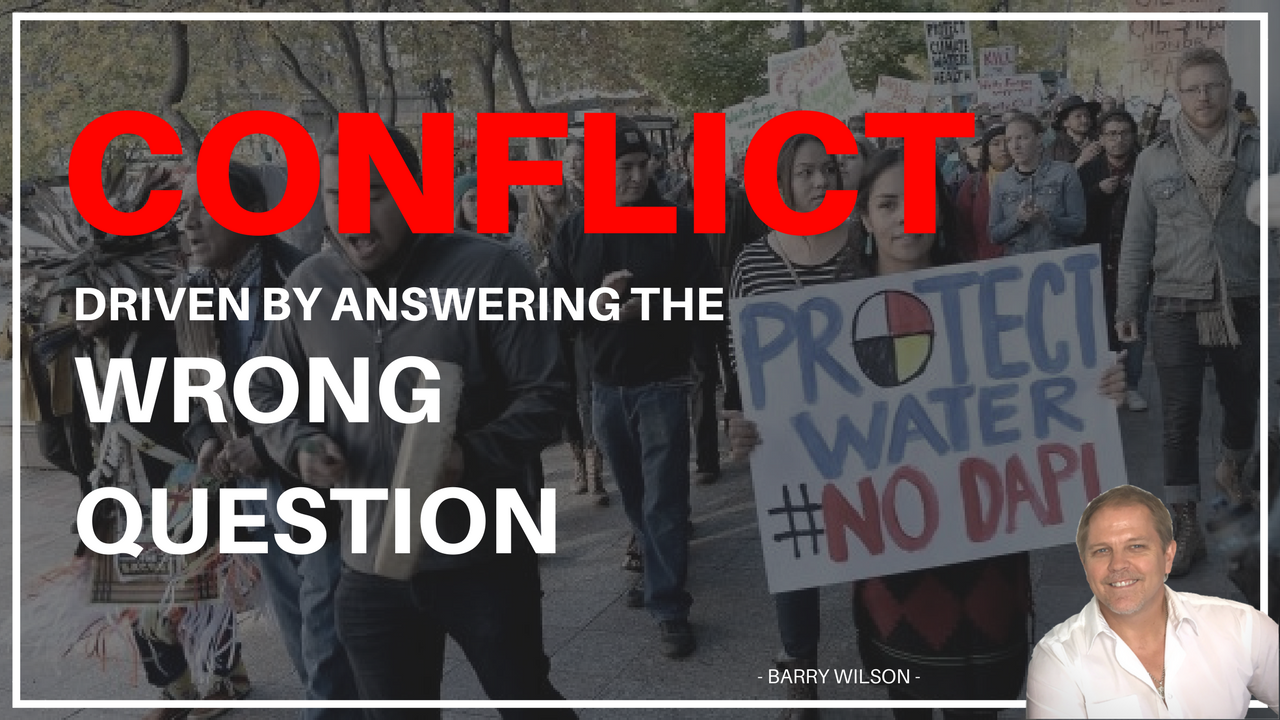
Project Conflicts Driven By Answering The Wrong Question
Nov 01, 2016THE ANSWER: THE PROPOSED PROJECT WILL HAVE NO SIGNIFICANT NEGATIVE EFFECT
Read just about any Environmental Impact Assessment (EIA) and this is the answer you will find. And of course the project will bring significant benefits or we wouldn’t be contemplating it. #Duh
But think about this for a moment. If there are no significant negative effects, shouldn’t the environment be pretty much pristine? It’s not pristine – so what gives here?
We the public ask the assessors the wrong question. Now, I am most familiar with the process in Canada, but it is my understanding that to a large extent, EIA’s around the world approach project assessments similarly. To greatly simplify it, the question we ask those who must assess the benefits and costs of proposed projects goes something like this, “compared to today, will there be any residual (left over) negative effects after we apply mitigation (first aid)?”
The key here is the baseline conditions that the project is compared with. This notion of the baseline always being today is a phenomenon known colloquially today as “the new normal”. Dr. Daniel Pauly, a well-known marine biologist, and author of several books and more than 500 scientific papers described this as the “shifting baseline syndrome” where each generation has a new perception of what is primal abundance and diversity.
In 2007, I was working on a study of cumulative effects in south-western Alberta with a grass-roots assembly of First Nations, ranchers, small-town citizens and heavy industry including forestry and big oil on the Chief Mountain Study[1]. We were examining the cumulative effects of all land use and natural disturbance on important values like groundwater and grizzly bears. One of the people working with me was a Blood Nation elder who could still remember the unbroken prairie of that area when she was a young girl. Plains Bison were already extirpated but her grandparents remembered them. In the 1970’s I remember going to that same area for a Scout Jamboree as an11-year old boy and my memories are of wheat fields and hay bales, as far as the eye could see. In 2005 we took our 9-year old kids there for vacation and their memories are of great lines of wind turbines, as far as the eye could see.

The new normal will be the death of us if we forget the real normal
This is at the root of many high profile conflicts over proposed energy-projects. At #StandingRock, the Tribal Elders are reminding us of broken treaties generations ago that seem to have been forgotten. The baseline for a current assessment of a Canadian hydroelectric project expansion on the Columbia River in Revelstoke doesn’t include salmon since the Grand Coulee Dam extirpated them from the upper river 75 years ago. And yet salmon in the Columbia River are and were an iconic and vital part of human existence, culture and education for thousands of years – so plentiful many indigenous elders remind us that they could have “walked across the river on their backs.” However, as Dr. Pauly described in 1995, “accounts of former great abundance are discounted as anecdotal, methodologically naïve, or are simply forgotten.”
What is the right baseline?

Range of Natural Variation or RNV. RNV’s represent condition ranges for indicators due to changes in landscape composition resulting solely from natural disturbance and indigenous occupation. In North America, these ranges are reflective of pre-contact[2] / pre-industrial conditions, as they do not incorporate effects of modern human footprints on the landscape. RNV baselines should be used to assess current and future relative risk to indicators: for instance, for wildlife indicators, RNVs represent a range of habitat conditions over which a population can be maintained. The degree by which current or future conditions depart from estimated RNV (particularly the lower boundary of RNV) is proportional to the degree of current or future risk to the indicator, as habitat values below RNV may not be sufficient to maintain pre-contact populations, or indeed any populations at all.
What is the right question?
How do the benefits and liabilities of the proposed project, in combination with all other past and reasonably foreseeable human and natural disturbances, contribute to or detract from our Vision for the future as described in our Watershed Management Framework?
[1] http://www.watertonbiosphere.com/uploads/biosphere-partners_8_255886894.pdf
[2] The term “pre-contact” is used here to refer to a period of sole indigenous occupation of the study area, prior to the arrival of immigrants of primarily European descent.

